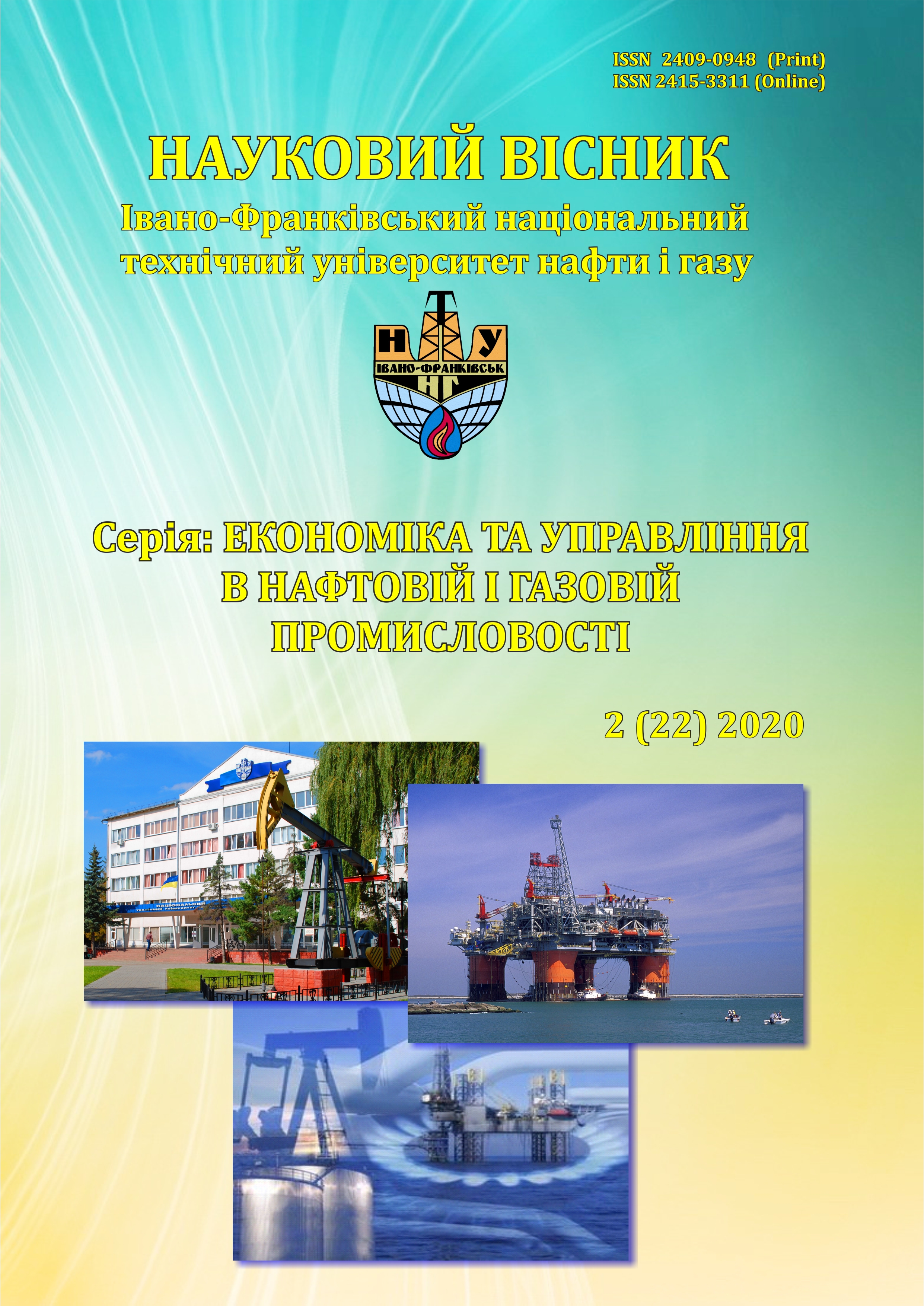THE USE OF INFORMATION TECHNOLOGY INDUSTRY 4.0 "INTERNET OF THINGS" IN E-COMMERCE
DOI:
https://doi.org/10.31471/2409-0948-2020-2(22)-81-86Keywords:
e-commerce, "Internet of things", information technology, industry 4.0.Abstract
The purpose of the study is to analyze the features of the use of information technologies in industry 4.0 "Internet of Things" in e-commerce. The study hypothesizes that the use of Industry 4.0 technologies contributes to the development of modern marketing, data analysis and ensures the security of transactions between consumers on online platforms, which is a driver for the creation of innovative business models, which, in turn, ensure the effective development of business and e-commerce.
The study determined that IoT technologies, big data and analytical capabilities have become an integral part of the development of retail at the present stage. With technological advances in a consumer-centric economic system, market participants can interact with customers through more diverse and effective means. In addition, businesses in the economic system can also optimize their operations and management, allocate and efficiently use resources based on consumer demand and quickly and accurately meet the desired demand by offering optimal goods and services. It is concluded that, as drivers of continuous innovation and transformation of the retail industry, enterprises should consider the technological innovations of Industry 4.0 with an open mind and actively apply them in their strategic transformations. That being said, it is very important to invest in marketing as well as research and innovation in order to achieve faster growth and a more solid position in the e-commerce market.
Modern business models of e-commerce with using Industry 4.0 technologies that contribute to the development of modern marketing, data analysis and secure relationships between consumers on online platforms are identified. Industry 4.0 technologies drive the creation of innovative business models that enable the development of business.
References
Industry 4.0. Challenges and Solutions for the Digital Transformation and Use of Exponential Technologies. (2020). Deloitte. Available at: https://www2.deloitte.com/ ch/en/pages/manufacturing/articles/manufacturing-study-industry-4.html#
Industrie 4.0. Smart Manufacturing for the Future (2013). Berlin: Germany Trade and Invest Gesellschaft für Außenwirtschaft und Standortmarketing mbH, 39 p.
Internet of Things: Next major disruptor for retail (2013). Available at: http://www.the–future–of–commerce.com
Duginecz G. V. (2018). Koncepciya "Internet rechej" v globalnomu vyrobnycztvi: dosvid dlya Ukrayiny [The concept of "Internet of Things" in global production: experience for Ukraine]. Ekonomika i region [Economy and region]. № 1(68). P. 127–133. Available at: http://journals.pntu.edu.ua/eir/article/view/1024.
Opanasyuk V. (2017). Іndustrіya 4.0: mіstse Ukraіni v mіzhderzhavnіy kooperatsіі і spetsіalіzatsіya [Industry 4.0: Ukraine's place in interstate cooperation and specialization]. Naukovі zapiski Natsіonalnogo unіversitetu "Ostrozka akademіya". Serіya "Ekonomіka" [Scientific notes of the National University "Ostroh Academy". "Economy" Series]. № 4(32). P. 67-71.
E-Commerce Impacts Global Trade (2018). Available at: https://globalshippersalliance.org/wp-content/uploads/2018/03/2017_AAEI_e-Commerce-BenchmarkReport.pdf
Orendorff A. (2019). The plague of e-commerce return rates and how to maintain profitability. Available at: https://www.shopify.com/enterprise/ecommercereturns.
Unpacking E-Commerce: Business Models, Trends and Policies (2019). Paris: OECD Publishing.
Mazaraki A., Duginets A. (2016). Essence of international production networks: institutional analysis. Contemporary issues in economics, business and management. Conference Proceedings. PRESSIA ltd. Belgrade, P. 265-270.
Global e-commerce 2019. (2020). Available at: https://www. emarketer.com/content/global-ecommerce-2019
Global manufacturing competitiveness index – 2016 (2017). Available at: https://www2.deloitte.com/global/en/pages/manufacturing/ articles/global-manufacturing-competitivenessindex.html
Communication technologies for the Internet of things in agriculture (Agro IoT) and the role of telecom operators (2018). Report 2017. J’son & Partners Consulting. Available at: http://json.tv/en/ict_telecom _analytics_view/communication-technologies-for-the-internet-of-things-inagriculture-agro-iot-and-the-role-of-telecom-operators
Shipp S., Scott J., Weber C., Finnin M. (2012). Emerging Global Trends in Advanced Manufacturing. Alexandria, VA: Institute for Defense Analyses. Available at: http://www.wilsoncenter.org/sites/default/les/Emerging_Global_Trends_in_Advanced_Manufacturing.pdf
Voigt K. (2012). China looks to lead the Internet of Things. Available at: http://edition.cnn.com/2012/11/28/business/china-internet-of- things/
Manyika J., Chui M., Bisson P. Woetzel J., Dobbs R., Bughin J., Aharon D. (2015). Unlocking the potential of the Internet of Things. Available at: http://www.mckinsey.com/insights/business_technology
Skіtsko V. І. (2016). Іndustrіya 4.0 yak promislove virobnitstvo maybutnogo [Industry 4.0 as an industrial production of the future]. Іnvestitsії: praktika ta dosvіd [Investments: practice and experience]. № 5. S. 33-39.
Jaruzelski B., Schwartz K., Volker S. (2015).Innovation’s New World Order.. Available at: http://www.strategybusiness.com/interactive/Where-Companies-Spend-Their-RD-Money.
WТО. Un.org. Available at: https://www.un.org/ru/sections/general/documents
Dijkman R. M., Sprenkels B., Peeters T., Janssen A. (2015). Business models for the Internet of Things. International Journal of Information Management. Vol. 35, P. 672-678.
Osterwalder A., Pigneur Y. (2010). Business Model Generation: A Handbook for Visionaries, Game Changers, and Challengers. 1st ed. John Wiley and sons, 288 p.
Downloads
Published
How to Cite
Issue
Section
License
Copyright and Licensing Terms
Copyright Statement
The authors who publish in the journal accept the following conditions:
- The authors retain the copyright and grant the journal the right of first publication, licensed with Creative CommonsCC BY-NC-SA , which permits other people to remix, transform, and build upon the material and use the material for non-commercial purposes, give appropriate credit and distribute the contributions under the same license as the original.
- The authors can conclude additional agreements on the non-exclusive distribution of the journal’s published version of the work (for example, publication of the work in electronic repositories) with an acknowledgment of its initial publication in this journal.
- The authors can upload the published articles on the Internet (for example, in electronic repositories or on web-sites), as it will stimulate fruitful scholarly discussions and increase the citation rates of the published articles.


1.png)


1.png)





